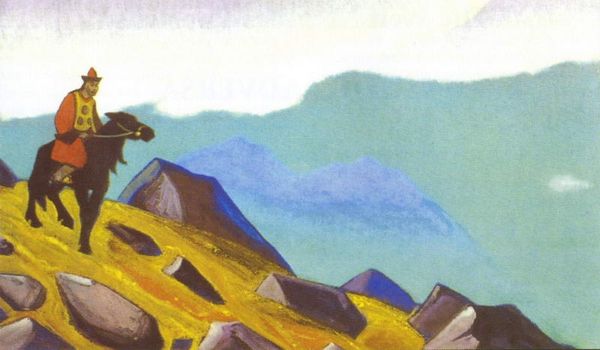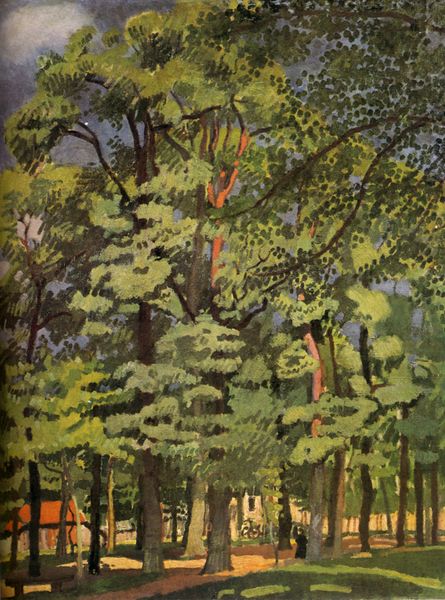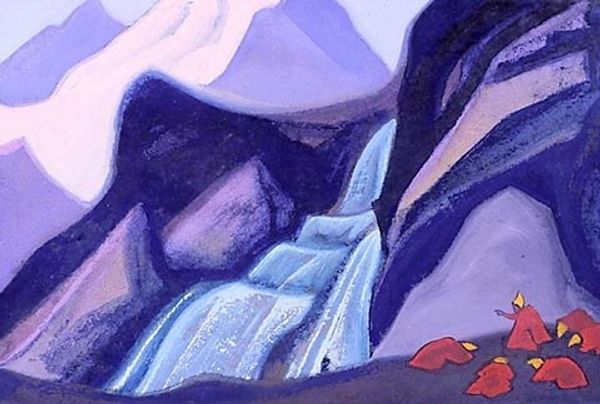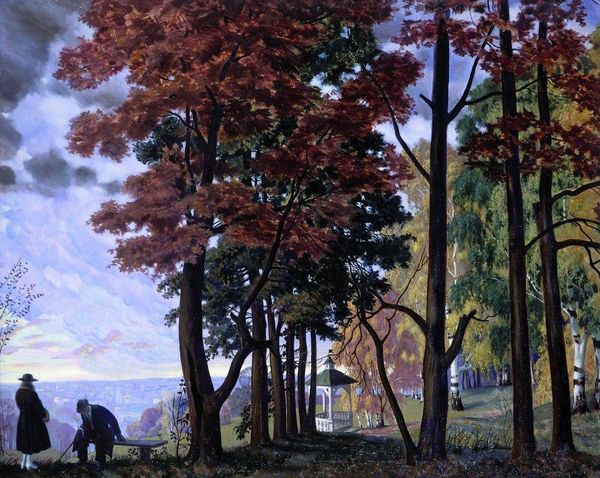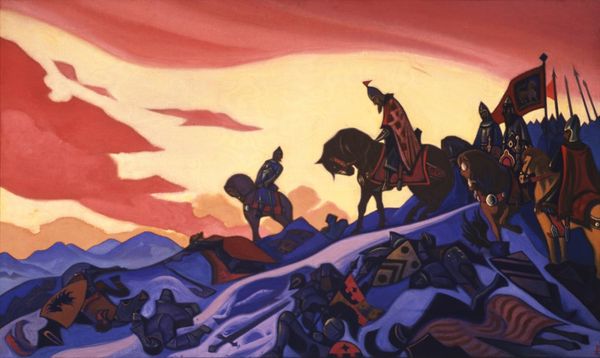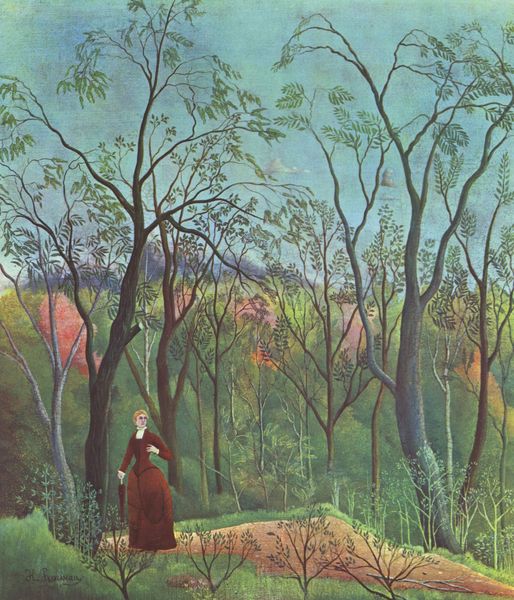
oil-paint
#
narrative-art
#
oil-paint
#
landscape
#
oil painting
#
academic-art
#
watercolor
#
realism
Copyright: Public domain
Curator: Welcome. We’re looking at Francis Davis Millet’s "Felling the Timber," created around 1909. It's an oil painting depicting a lone lumberjack in a landscape of autumn colors. Editor: The composition really strikes me. There’s a stark contrast between the strong, upright figure of the man and the horizontal, fallen tree trunk. It conveys a sense of both human power and nature subdued, and it has a very still, quiet mood. Curator: Absolutely. Let's consider the materiality. Oil paint allows Millet to render the textures of the bark, the rough-hewn stump, the man's clothing, and the foliage. You can almost feel the crispness of the autumn air and the weight of the labor depicted. And observe the artist's rendering of sunlight and shadow; it adds dimension, really enhancing our understanding of the raw materials present within the lumbering process. Editor: And in its own time, early 20th century, this imagery speaks volumes about the role of labor in the industrial growth and exploitation of natural resources that characterized the period, a period where these resources and rural labor would come to reshape our economic landscape entirely. There is an interesting sense of masculine ideals here, but at what cost? Curator: That’s an important point. You see, Millet often depicted scenes of American life, reflecting both its idyllic aspects and the changing realities of the industrial age. Think about the impact lumbering had on communities, both positive in terms of industry and resources, and negative in its environmental impact. It speaks to the complexities surrounding the shift in values that prioritize material and economic gains. Editor: There's something inherently violent in the image, right? Even within this landscape awash with light, one tree has already fallen. How might viewers back then have experienced Millet's depiction of industrial progress reshaping natural habitats, and, further, labor relations? Was Millet offering a form of social commentary on capitalism’s heavy impact? Or an idealized masculine vision for labor’s future? Curator: He came from an artisan family, so he undoubtedly had respect for hard labor. The detail Millet lavishes on rendering each detail—from the axe handle, down to the tree bark—is very important here. Think of his intended audience's relation to land and labor and its production when they see the finished product, a world transformed through the labor of making goods, literally being chopped down around them in ways his patrons benefited from and yet were completely separate from. Editor: So ultimately this tableau really becomes something multifaceted, beyond an aesthetically pleasing painting; the landscape reveals broader sociopolitical landscapes, right? Curator: Precisely. Thanks for lending a deeper perspective. Editor: It's been a pleasure. These contextual details always illuminate my interpretation of material engagement!
Comments
No comments
Be the first to comment and join the conversation on the ultimate creative platform.



